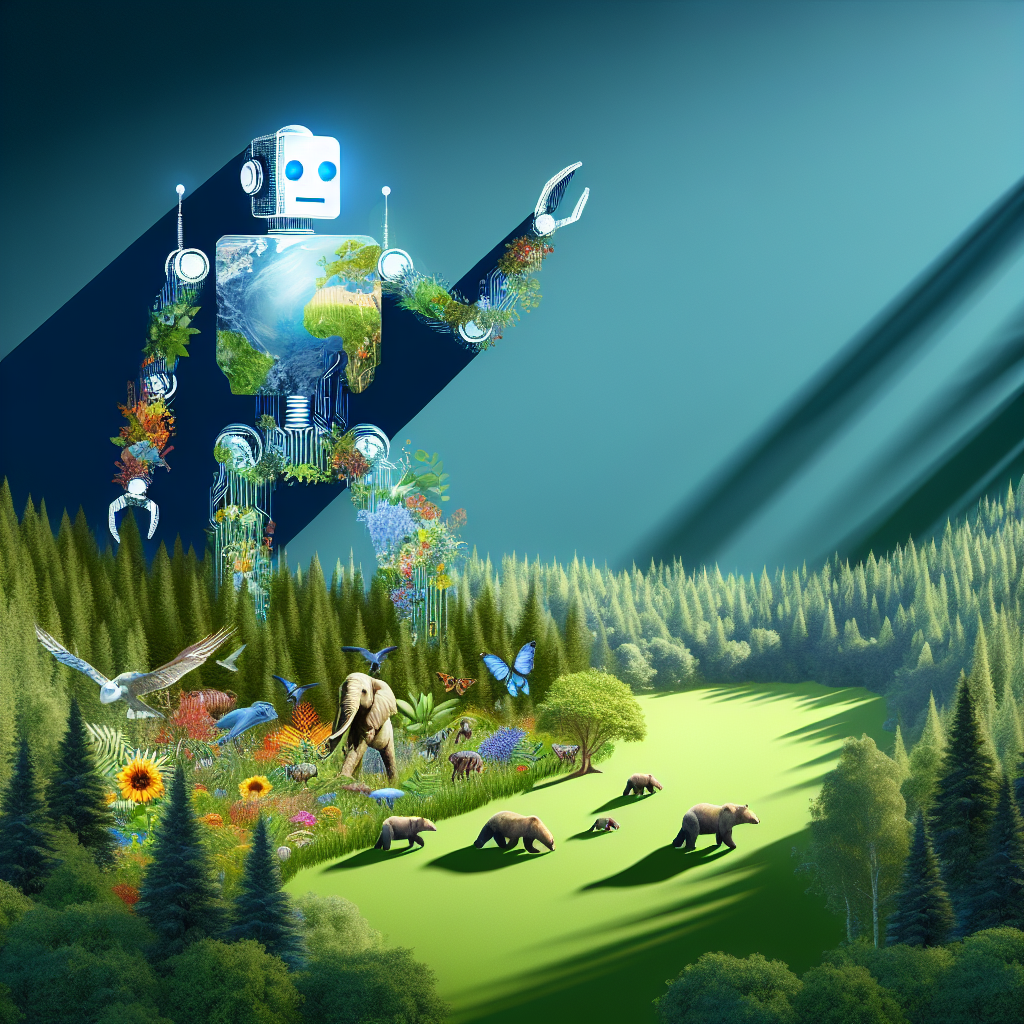Artificial Intelligence (AI) has rapidly become a valuable tool in various fields, including environmental conservation. From monitoring endangered species to predicting climate change impacts, AI has the potential to revolutionize the way we approach conservation efforts. However, like any technology, AI comes with its own set of risks and challenges, particularly when it comes to its impact on biodiversity. In this article, we will explore the risks of AI in environmental conservation, focusing on its potential impacts on biodiversity.
One of the primary risks of using AI in environmental conservation is the potential for unintended consequences. AI algorithms are designed to analyze large amounts of data and make predictions based on patterns and trends. While this can be incredibly useful for identifying threats to biodiversity and developing conservation strategies, there is always the risk that AI could make errors or oversights that could have negative impacts on ecosystems.
For example, AI algorithms used to predict species distribution patterns could inadvertently lead to mismanagement of habitats or resources, resulting in the decline of certain species or the introduction of invasive species. Similarly, AI-powered drones used for monitoring wildlife populations could disrupt natural behaviors and stress animals, leading to unintended consequences for their survival.
Another risk of AI in environmental conservation is the potential for bias in data collection and analysis. AI algorithms rely on data to make decisions, and if that data is biased or incomplete, it can lead to inaccurate or unfair outcomes. For example, if a conservation organization only collects data on certain species or habitats, AI algorithms may not be able to accurately predict the impacts of conservation efforts on other species or ecosystems.
Additionally, AI algorithms can also perpetuate existing biases and inequalities in conservation efforts. For example, if AI is used to allocate resources or prioritize conservation projects, it may favor certain species or ecosystems over others, leading to inequitable outcomes for biodiversity.
Furthermore, the use of AI in environmental conservation raises concerns about privacy and data security. As conservation organizations collect and analyze more data using AI, there is a risk that sensitive information about species, habitats, and conservation strategies could be compromised or misused. This could have serious implications for biodiversity, as poachers or other malicious actors could exploit this information to target vulnerable species or ecosystems.
Despite these risks, AI also has the potential to greatly benefit environmental conservation efforts. AI can help conservationists more effectively monitor and protect endangered species, predict the impacts of climate change on biodiversity, and develop innovative solutions to conservation challenges. By leveraging the power of AI, conservationists can make more informed decisions and take proactive measures to protect our planet’s natural resources.
In order to mitigate the risks of AI in environmental conservation and maximize its benefits for biodiversity, it is crucial for conservation organizations to prioritize transparency, accountability, and ethical considerations in their use of AI technologies. This includes ensuring that data collection and analysis processes are transparent and inclusive, that AI algorithms are regularly monitored and audited for biases, and that privacy and data security measures are in place to protect sensitive information.
Additionally, conservation organizations should engage with stakeholders, including local communities, indigenous peoples, and policymakers, to ensure that AI technologies are used ethically and responsibly in environmental conservation efforts. By involving a diverse range of voices and perspectives in decision-making processes, conservationists can help ensure that AI is used in a way that benefits biodiversity and promotes environmental justice.
In conclusion, while AI has the potential to revolutionize environmental conservation efforts, it also comes with risks and challenges that must be carefully considered and addressed. By prioritizing transparency, accountability, and ethical considerations in the use of AI technologies, conservation organizations can harness the power of AI to protect and preserve the world’s biodiversity for future generations.
FAQs:
Q: How is AI used in environmental conservation?
A: AI is used in environmental conservation for a variety of purposes, including monitoring wildlife populations, predicting species distribution patterns, analyzing climate change impacts, and developing conservation strategies.
Q: What are the risks of using AI in environmental conservation?
A: The risks of using AI in environmental conservation include potential unintended consequences, bias in data collection and analysis, privacy and data security concerns, and perpetuation of existing biases and inequalities in conservation efforts.
Q: How can conservation organizations mitigate the risks of AI in environmental conservation?
A: Conservation organizations can mitigate the risks of AI in environmental conservation by prioritizing transparency, accountability, and ethical considerations in their use of AI technologies, engaging with stakeholders, and regularly monitoring and auditing AI algorithms for biases.
Q: What are the benefits of using AI in environmental conservation?
A: The benefits of using AI in environmental conservation include more effective monitoring and protection of endangered species, better prediction of climate change impacts on biodiversity, and development of innovative solutions to conservation challenges.

